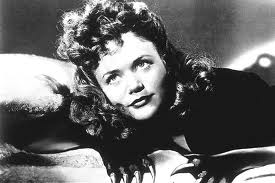Every year in our house we watch at least thirty horror movies during the month of October. Of those, very little are what I would consider feminist, or at least having a feminist agenda of some sort. So, why not seek some out and recommend them to you? I am also getting them out super early this month so that you can enjoy all Halloween season long!
Here’s the straight dope: this task turned out to be a lot more difficult than I thought–there are about a million and one horror films out there, if you didn’t know. While sifting through the plethora of bloody thrillers, teen screams, zombie flicks and vampire love stories, directed by both men and women, I came across a few that stood out as notable films ranging from masked and subtle to overt feminist themes. I narrowed my list down to ten and are in alphabetical order.
Enjoy you feminist sickos!
Carrie
(Brian De Palma, 1976)
This movie is the ultimate revenge fantasy for any girl who was picked on in high school by the popular girls. Carrie is tormented by both her uber-Christian mother and the nasty girls in school, but gets her comeuppance with the help of her telekinetic powers.
Cat People
(Jacques Tourneur, 1942)
The women of the Dubrovna clan in Serbia turn into large, angry cats when they become jealous or angry and attack the threatening man, or woman. Young Irena, now transplanted to New York, has brought her family history with her, along with her deadly kiss! (Also refer to my Cat People blog post under the Movie Reviews tab.)
The Descent
(Neil Marshall, 2005)
With the exception of a brief appearance during the first five minutes of the film, this all female cast entails a descent, if you will, of both the physical and psychological kinds. A group of six women go spelunking in North Carolina where they encounter a group of ravenous, bloody thirsty creatures, leaving them to rely only on themselves as the heroes.
In My Skin
(Marina de Van, 2002)
I saw this movie for the first time this year and was intrigued because it was compared to Polanski’s Repulsion. Though this flick delves heavily into body horror; one could argue that she is exercising autonomy over her own body, making the conscious decision of whether or not to mutilate herself. Where others may find her mutilation deplorable, she finds comfort. In all, it definitely kept me on the edge of my seat and biting my fingers nails throughout most of the movie…though my definition of biting my finger nails is quite different than how the lead in this film would bite hers…
Ravenous
(Antonia Bird, 1999)
Antonia Bird’s Ravenous encompasses Guy Pearce, westward expansion, war, physical and mental seclusion, and oh, don’t forget, cannibals! This film has subtle sprinklings of a feminist woman’s touch, including the female Native American who seems to be the only character with any sense amongst the all male cast.
Repulsion
(Roman Polanski, 1965)
Catherine Deneuve. A woman repulsed by all men. Enough said.
Rosemary’s Baby
(Roman Polanski, 1968)
This year, Roman gets two films on my top 10. Though slightly predictable to be on many horror lists, nothing scares me more as a woman than a group of men having literal control over my uterus, not to mention giving birth to Satan.
Sleepaway Camp
(Robert Hiltzik, 1983)
This movie has one of the most shocking endings I’ve ever seen, along with some hardcore gender bending that will blow your mind!
The Slumber Party Massacre
(Amy Holden Jones, 1982)
Written by Rita Mae Brown and directed by Amy Holden Jones, this horror flick has a feel all its own and in many ways sets itself apart from the typical B-Horror film of the 1980s. Though the premise of an all-female crew alone with the parents away on vacation may seem run of the mill, but it dares to confront such issues as youth, virginity, masculinity and fear all in one swoop.
I give Slumber Party Massacre this year’s top Feminist Horror Film award for being my favorite new discovery!
Teeth
(Mitchell Lichtenstein, 2007)
Vagina Dentada. Look it up.
If only we all, men and women, could instantly react against our aggressors in such an assertive manner.
For more recommendations, see the list for my 2012 Feminist Horror Movie Picks and 2013 Feminist Horror Movie Picks












